Spiders, Spiders Everywhere!
Quinn poked the massive spider carcass with her foot. The massive leg twice her height and size twitched, but did not uncurl from beneath the exoskeleton. “Yep,” she said. “It’s dead all right.”
Her companion rolled their eyes. “I’m not blind. Can you tell what killed it?”
“Clearly not its natural predators.”
“These things have natural predators?”
“All things do.” Quinn crouched beneath the threads of web and moved to the spider’s head. She didn’t technically need to avoid the webbing since their maker was dead, but ravler instincts were nigh impossible to unlearn. “Not seeing any bite marks, nor any exit wounds.”
“What would be exiting—never mind. I don’t want to know.” Her companion shivered, clutching their sword closer.
Quinn was too excited for the question. “Oh, there are a number of giant wasps that lay their egg on the back of spiders. There’s one species that has the growing larva turn the spider host into essentially a zombie. And then, it eats the spider from the inside out.” Quinn made smacking noises with her mouth.
“Too much!”
Well, she thought it was cool. Quinn returned to examining the carcass. No signs of injury anywhere. This spider looked well fed, all things considered. No signs of hemolymph leaking out of the body either; this fella didn’t bleed to death. Running her hands over the spider’s head, Quinn took care to not touch the cluster of stone black eyes. She wasn’t superstitious like the rest of her colleagues, but today was not a day to test her ravler luck either.
Then, her fingers felt something metal right below the spider’s fangs.
“Aha!” Quinn held up the brown dart above her head. “I think I found the cause of our big fella. Looks empty though. Wonder what kind of liquid was—” The web around her feet thrummed. “You didn’t touch that, did you?”
Her companion shook their head fervently. They hadn’t moved an inch.
Quinn vaulted over the webs beside her. “It’s trying to lure the spider to its location by disturbing the web. I do not want to be here when it gets curious. Let’s book it—“
The trees around them shuttered. Scattering the leaves and down the dead spider’s threads charged a creature with the body of a spider, but with an elongated neck. Its pincers hung from its face like a pelican, if that pelican also happened to be a demon. Quinn pulled her companion behind the massive carcass. The giant spider perched at the edge of the tangle of webs, plucking the threads eagerly and waiting for the dead spider to fall for its bait.
“What is that?” Her companion gasped.
“The spider’s natural predator.” Quinn ground her teeth as the webs quivered with every pluck. “Another spider.”
More Spiders! Yes!
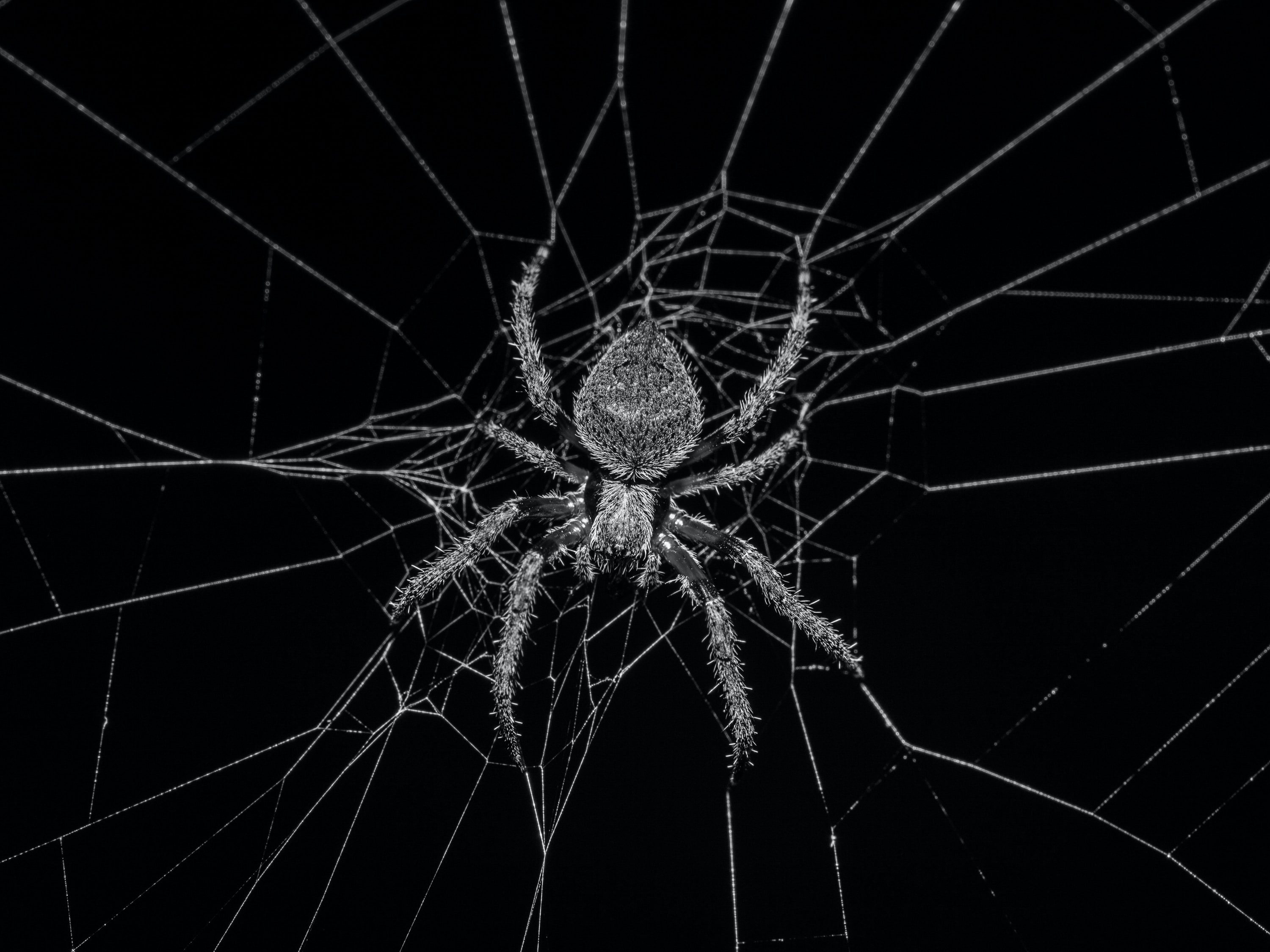
Happy Halloween!
We find ourselves visiting spiders once more, but now we’re looking past their webs to spiders themselves in their glory! If you’re new here, check out my previous post on spider webs before diving into this post!
Confession: I have a soft spot for spiders. If you were to ask me my top ten scariest animals on the planet, I probably wouldn’t mention spiders (with one exception, which we’ll see later). I’ll admit that their legs tip-toeing towards or away from me is unsettling, but besides that, I think they’re weirdly cute.
The fact about me may be the most horrifying fact you’ll pull in this post. Tis the scary season!
In this post, I do a lot more linking to videos and Wikipedia, which I think are amazing resources to demonstrate how awesome these creatures are in action. These links also provide some of the best visuals for this post, as it’s weirdly difficult to find royalty free images of most of the spiders to put on here. Explore every link, my friends!
The Mechanics of Spiders
Spiders don’t use leg muscles to walk, or at least muscles like the ones that we humans (or most other animals) would use. Instead, they use hydraulic compression; a muscle in the spider’s heads compresses, forcing blood into the spider’s legs. This extends the legs. When the muscle relaxes, the blood is allowed to refill the area near the head, and the legs (no longer filled with blood) contract.
If you check out this video here,, you’ll find how researchers at Rice University hijacked this pressure system in spiders to turns deceased spiders into robotic grippers. I kid you not, they’re calling this area of research “necrobiotics” in their interview here.
(It’s the Halloween post, I’m allowed to be creepy. Let’s enjoy some science “necromancy*!”)
(*I also have to add that the scientists specifically—and disappointingly—say that their work does not count as reanimation . Dang)
While not related to anatomy but still on topic for spider movement, many spider species perform a behavior called ballooning where spiders like tiny orb weaver or baby spiders release fine threads into the air. These threads form a triangle “parachute” that catches the wind, and then “up up and away” the spiders go!
If you’ve seen or read Charlotte’s Web, that’s what the baby spiders apparently do at the very end (spoilers for the book!). In the Bay Area of October of this year (2023), spider silk balloons have been seen falling from the sky. Imagine strolling along, minding your own business, and you look up to spiders paratrooping onto you!
Spider Bite
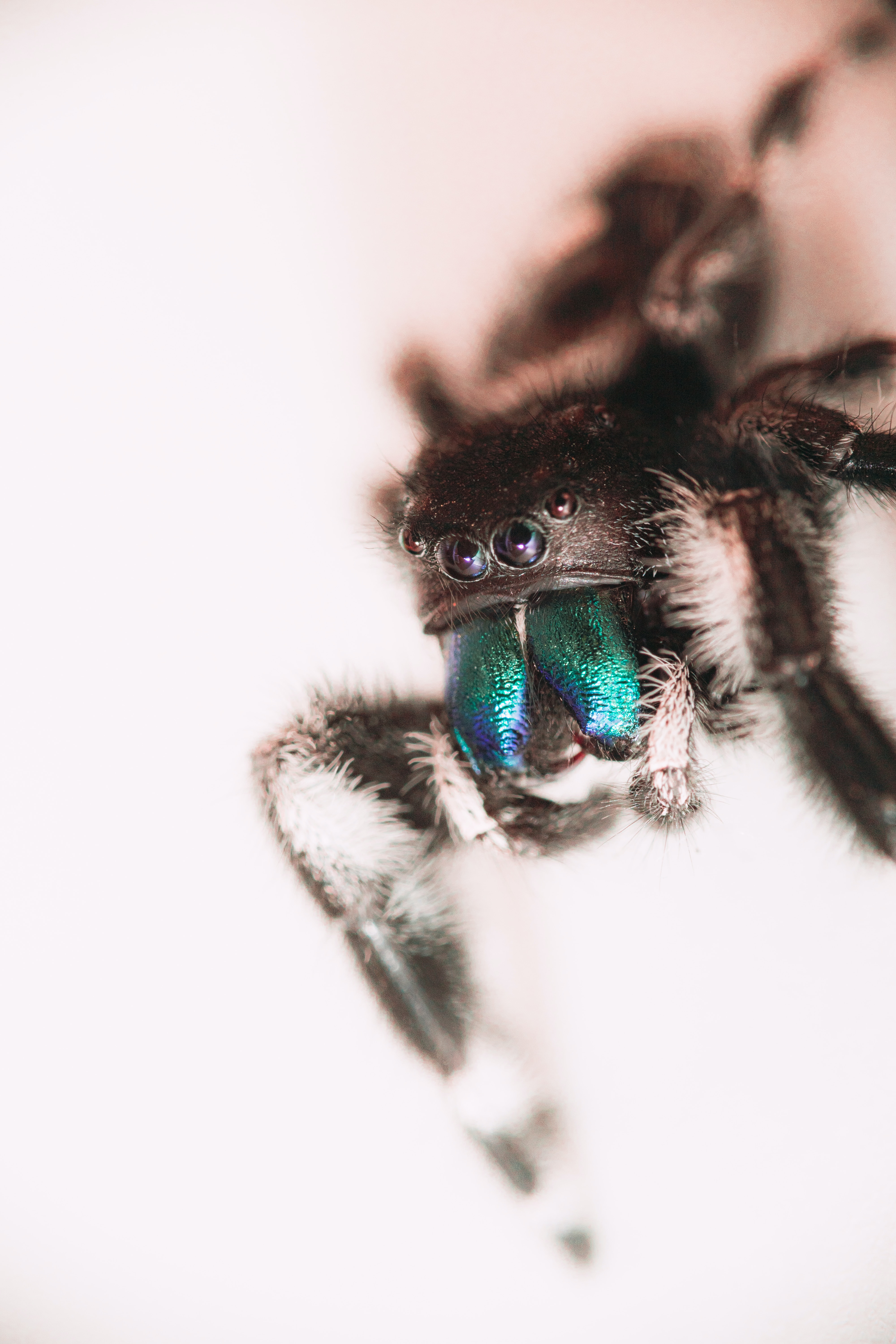
Have you ever wondered how spider bites can cause so much pain from a creature so tiny? Some of that is the venom they pack, which I’ve discussed before in a previous post. Spider venom is as varied as the spiders themselves, but according to Wikipedia, spider venoms tend to fall into two categories: neurotoxic (attacking the nervous system) and necrotic (killing cells in your body).
But if we take the venom away, the little fellas still pack a punch! That’s because they use “Heavy Element Biomaterials” when creating their pincers. What this means is that heavy metals such as zinc, copper, or bromine are incorporated into the organic material of their fangs. Unlike us mere humans, who use calcium to make our bones (teeth included), the spiders have reinforced their fangs with some intense metals.
Spiders aren’t the only critters that can pull this biological trick off. The linked paper looked at these incorporated heavy metals in centipedes, ants, scorpions, and worms.
Personally, I took this to mean that giant spider fangs could potentially be viable weapons in a pinch!
Snacking On Their Partners
Most females will devour the males after they mate… or before, or even during. Sometimes the female is just hungry and wants a snack, and the male happens to be in the wrong place at the wrong time. This is appropriately called sexual cannibalism.
However, the clever male spider will have escape plans! The orb weaver male catapults itself off of the female at the slightest hint of danger. They’re capable of “yeeting” themselves to safety thanks to their hydraulic compression; compress the big muscle really fast, and blood shoots into their legs, straightening the limbs to fling them 2.9 feet per second (according to the linked article).
Jumping Spiders
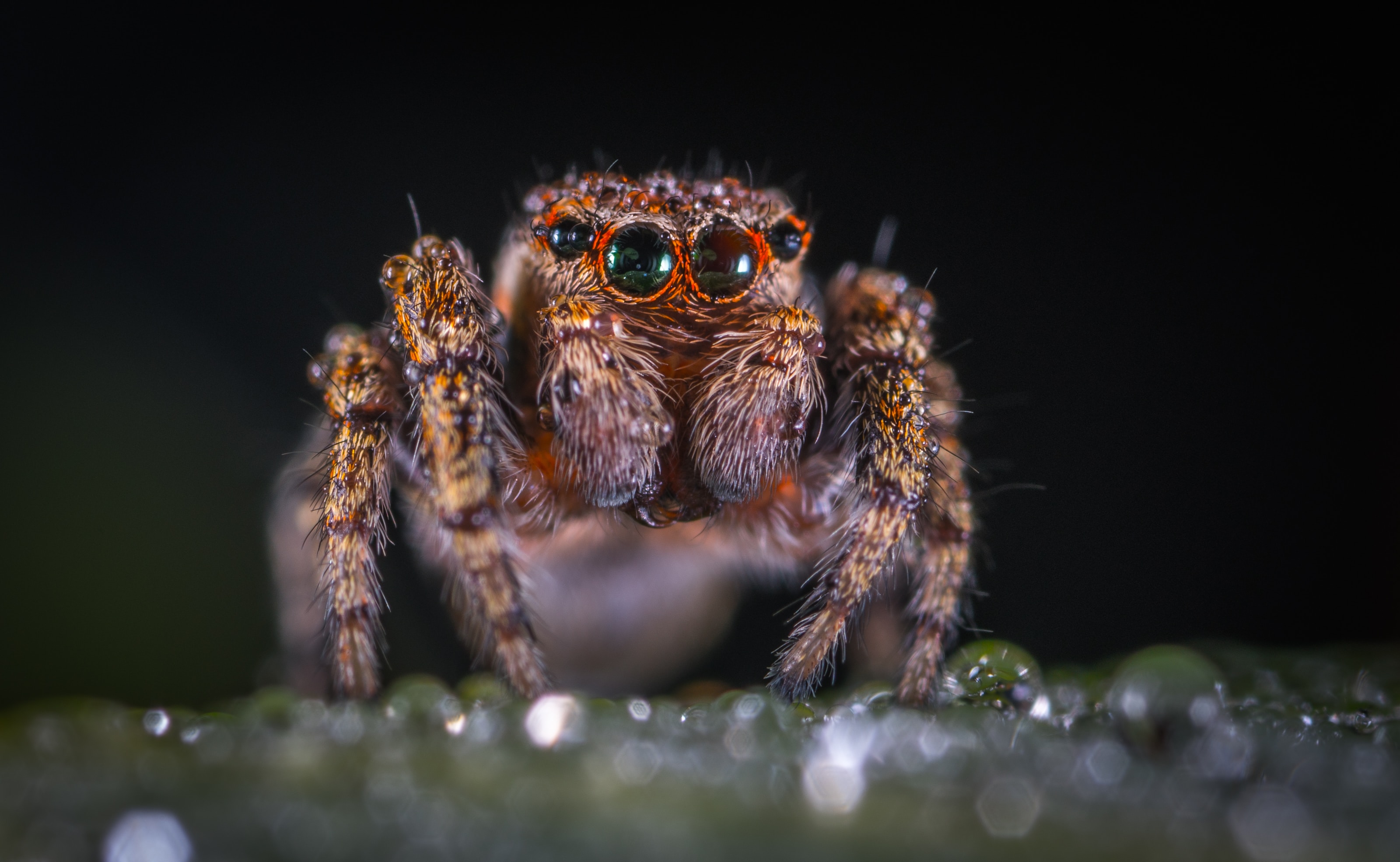
I have to talk about my favorite spider, which is also the cutest spider ambassador ever: the jumping spider. This is a spider that does not use any web to hunt, but instead leaps at its prey!
They are visual hunters, unlike most other spiders, so they have evolved eyes similar to our own! Yes, they have multiple eyes like other spiders, but their biggest characteristic is their two BIG eyes facing forward. If you remember my nightvision post, we talked about how our eyes have a lens that focuses light onto our retinas, and that’s how the jumping spider’s eyes work. It’s described as “camera-like,” and the linked article describes the spider’s eyes as having “five times lower [special resolving power] than the maximum value… of the fovea of the human eye.” That’s not a huge difference between species.
Because their eyes don’t swirl around in their sockets like ours though, the jumping spider turns its entire head to take a good look around. This comes across as a cute head tilt. It is adorable.
How far can they jump? A google search claims 30x their body length, but the jump length of any given spider is varied amongst the species. The jumping spider is able to use it hydraulic compression to fling itself across gaps without the need for massive muscles.
Since these spiders are all about visual acuity, their courtship involves a bit of a dance. The males tentatively approach the females while lifting their arms up wide and moving to get directly in front of her. Some male jumping spiders are capable of attracting the females by not only waving their arms about, but also through a vibration called substrate-borne communication. This is a fancy way of saying, “sends vibrations through whatever they’re standing on.” Spiders aren’t the only ones who perform this kind of communication, but it features prominently in their daily lives (like mating or sensing captured prey in their webs).
And if we head to Australia, we’ll find a type of jumping spider called the Peacock spider, named for the male’s brightly colored flaps of exoskeleton that flip up during their mating dances (see video here. They too wave their arms about to get the female’s attention, as well as their colored flaps to yell out to their potential mate, “OI! LOOK AT ME! I’M SHMEXY!” (This plays into their species’ strength of being visual hunters)
I’m just saying: if you wish to shake up the classic “meet a giant spider” in your creative writing or Table Top Role Playing Games, may I suggest having a giant spider who could, say, jump at our heroes at long distances?
And because I thought it was hilarious, here’s a video of a peacock spider dancing to flamenco music. Enjoy!
The Assassin Spider
This spider blew my mind so much during the research part of this blog, that it deserves its own section.
Its alternate name, the “pelican spider,” more accurately describes this creature’s looks. It’s wild; their jaws are long and beak-like. They also have a freaking pelican neck. Picture it with me: imagine the normal body of a spider, but where the eyes and pincers should be is the head of a pelican.
But while spiders are cannibalistic in general, this spider specializes in hunting… spiders. They are the predator of the predators.
They pluck on the webs of other spiders, or wait on the spider webs. When the spider gets close enough to the assassin spider, the assassin spider impales the spider with its beak and waits for it to die. The long beak keeps the prey from biting the assassin spider back.
And of course, it’s in Australia.
You have to check out this video here. Seeing these creatures in action is an experience that is horrifyingly fascinating. It moves like a spider, it has legs like a spider, but the head is not a spider’s and it’s so unnerving!
(Horror writers, fantasy writers, this is now the best spider for the genre. I don’t make the rules. Meeting this arachnid in a back alley will give people all kinds of nightmares.)
Spider Variety Speed Round
Alas, there is no way I can create an entire section for every cool spider out there. I am but a mortal graduate student. So, in an attempt to showcase how wild the spider variety is in nature, we’re doing the spider speed dating round of the post!
Spiders can jump, climb, and slingshot themselves… but did you know they can also cartwheel? The Golden Cartwheel spider can escape across desert landscapes by curling up into a ball. This spider can out roll it’s natural wasp predator at a speed of 3 meters per second. From what I have read, this rolling is only an escape mode of transportation, and not a hunting mechanism, but can you imagine a giant spider rolling across sand dunes?
Are you interested in writing a water-based adventure, but still want to add some spiders into the plot to spice things up? Lucky for you, the diving bell spider is an aquatic spider that captures air in a silk structure that it drags down below the water’s surface like a scuba tank! The silk structure is, of course, called the diving bell. Watch it in action here!
If you thought the pelican spider was a sight to behold, wait until you see the whip spider! This kind of spider has a long, thin abdomen that gives it the disguise as a twig.
Spiny Orb Weaver is a spider that has colorful spines poking out of its back! (see pic!)
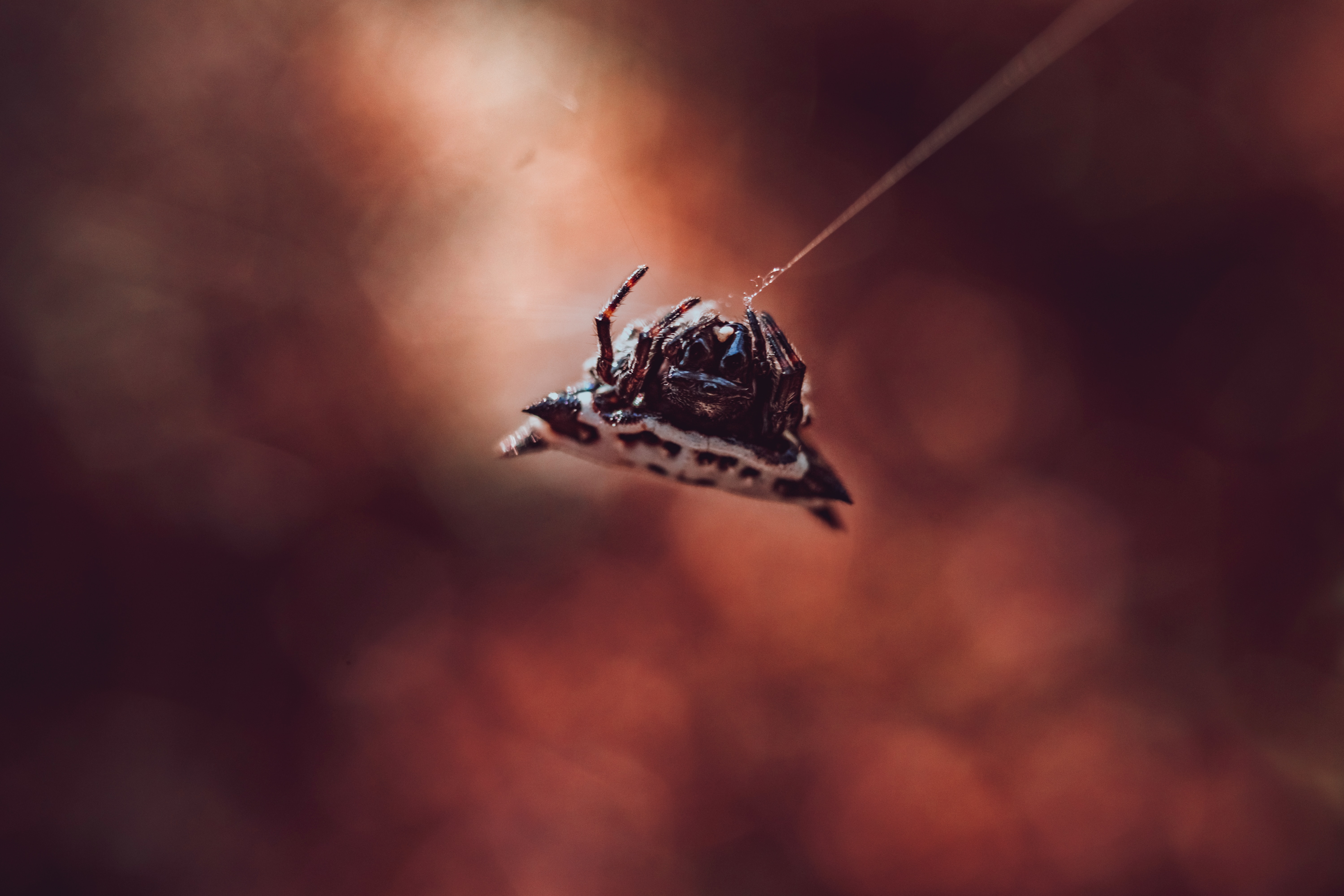
The aptly named trapdoor spider creates a tunnel underground, and uses a trapdoor to ambush unsuspecting prey. Dungeon Masters, Game Masters, I have found your next potential enemy for unsuspecting players. You’re welcome!
Speaking of trapdoor spiders, there’s a species in China called hourglass spiders that have a coin shaped disc on its back. According to Wikipedia, this disc acts as a shield and a plug for the spider’s burrow entrance.
The Selenops spider is known to skydive and steer itself on its way down from the top of the canopy. That is… equally fascinating as it is terrifying.
That’s All Cool, But Now What?
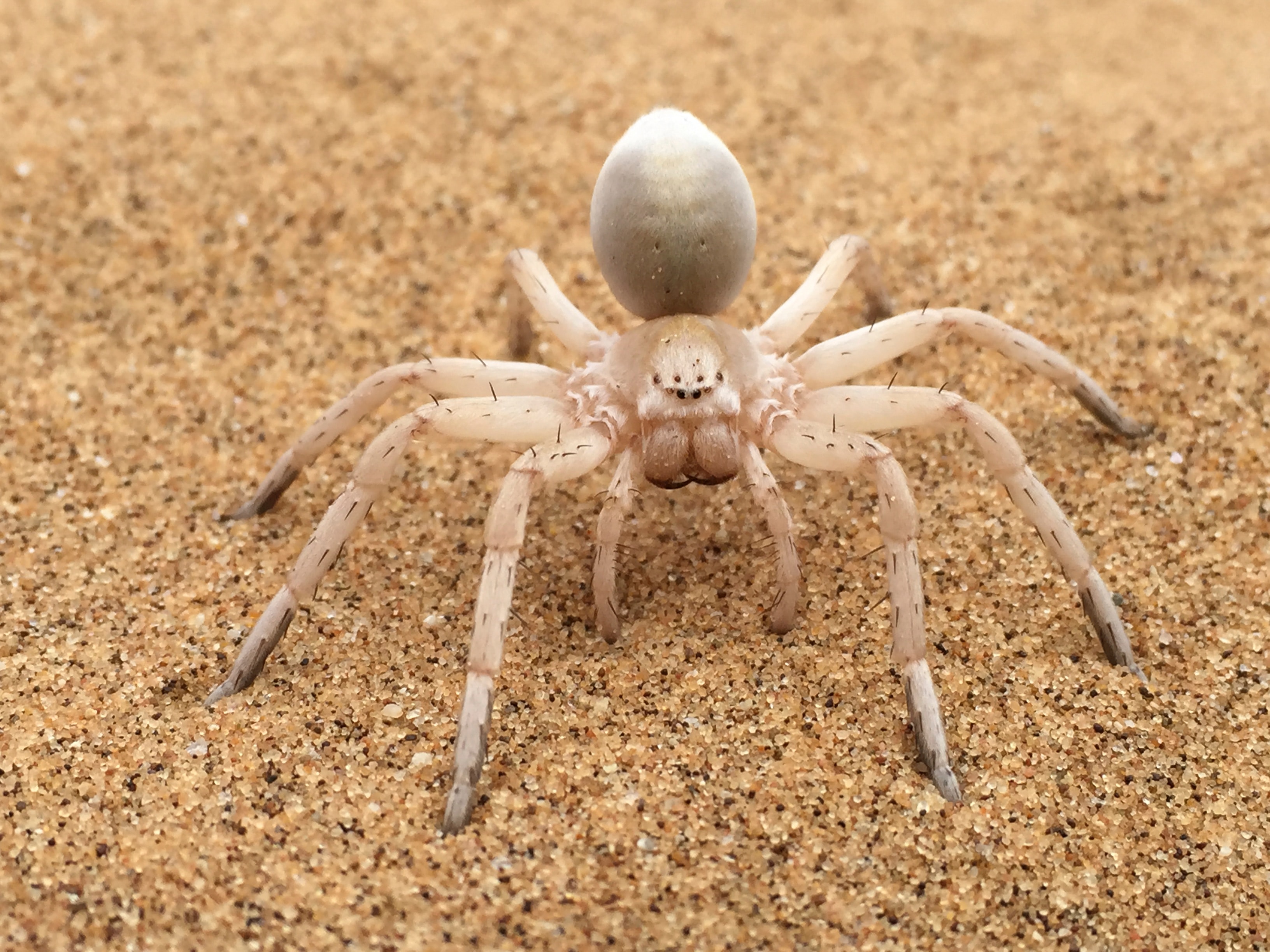
The low hanging fruit answer for that question is: we can spice up the classic “meet giant spider” encounter in fantasy stories. I firmly believe that a giant pelican spider would redefine the horror genre. As much as I love jumping spiders, having a giant jumping spider on the hunt would be “Alien” level of terrifying.
Perhaps we present our fantasy/fictional spiders in a kinder light, showing them as wanting nothing to do with humans, scuttling away at the sight of humans. We could have people dedicated to studying these creatures and collecting their web (see my previous post)
But if you could use that for some more fantastical worldbuilding? Let’s do some fun fantasy brainstorming using a unique fantasy creature.
In Japanese Folklore, we have the Jorōgumo, a spider demon, or yōkai, that shifts back and forth between its monstrous spider form and a gorgeous woman. Another spider yōkai is the Tsuchigumo, which is more like your classic giant demon spider.
Because I’m not familiar with this folklore, I can’t appropriately dive into these fantasy creatures. But… I do have a close Western spider-folk I can use in their place, although unless you’re a gamer, you’ve probably never heard of it.
In Dungeons and Dragons (my favorite role playing game), there is a creature known as the “Drider.”. This is the spider version of the centaur, where the upper half is an elf while the lower half is a giant black widow spider.
The specific details and lore of Driders is not important for this post, as this is a problematic creature in the game upon examination. As to why I didn’t spend the whole blog post worldbuilding this creature, it’s because there’s no way I can scientifically justify a centaur, let alone a spider-centaur. How many stomachs do they have? How do the digestive systems work? How would the hydraulic system work if the upper half is humanoid and would faint at the change in blood pressure every time the creature had to move their legs?
But lore and scientific improbability aside, let’s see if we can use spider diversity to make these creatures more interesting. (And while we know spiders are cannibalistic and territorial, I’m going to ignore it because for fantasy species, lone wolves are boring. Communities are fascinating!)
Peacock spiders: You have a Drider with HUGE eyes and a colorful flap. Whenever they want your attention, they raise their hands, unfold their flap, and start dancing in front of you going “hey! Hey! Hey!” Young driders have a hard time judging their distances and are lovingly known as “ground kissers.”
Trapdoor spiders: these Driders have developed an underground society, and specialize in ambushing. Young driders are masters at hide-and-seek.
Assassin/pelican spiders: Let’s go bold. Let’s give these driders long pincers and elongated torsos. They’re probably the one drider species that closely resembles their spider inspiration.
Diving Bell spider: Drirders of this variety are known as “webbed mermaids,” having a thriving societies in deep lakes or other fresh bodies of water. I can see them having a communal webbed diving bell. If they can see well under water, they have developed their own sign language. If they’re down too deep and can’t see in the darkness, perhaps they have a tactile sign language.
All Driders have a unique language that utilizes web plucking or ground vibrations. I would also give them all venom. We need more spider-inspired creatures!
Final Thoughts
And so ends my spider saga… until I get a guest writer expert on spiders! This was so much fun to write!
The more I’ve written on this two-parter, the more I think I have a small book waiting to be written, to display the untapped potential of spiders in any genre. I think Quinn and her friend will need some spider adventures in her “ravler” quest for the best web find.
Welp, that’s all that I have for you all. Happy haunting, everyone!
